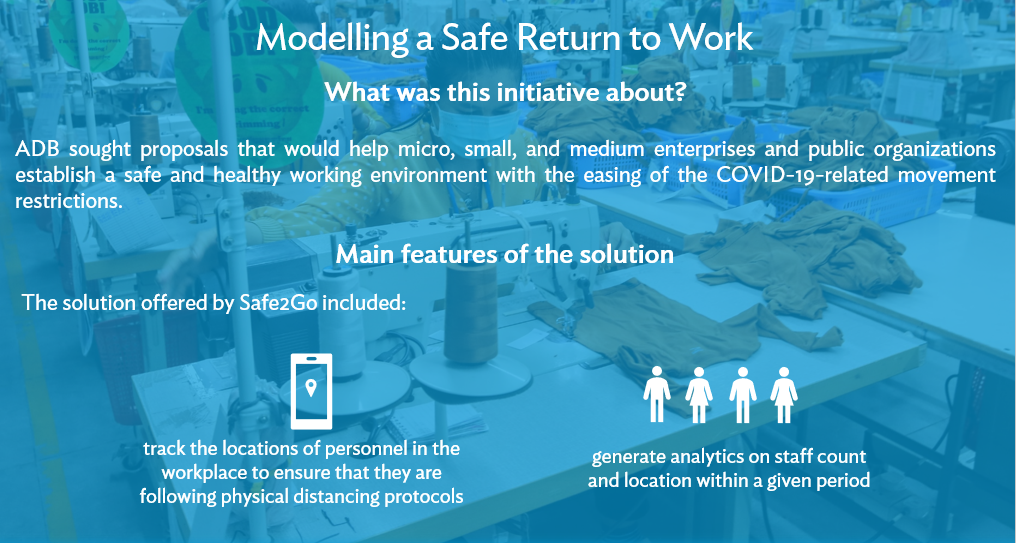Modelling a Safe Return to Work: Making workplaces of MSMEs safer using digital technology
Start of implementation: 2021
Technology type: Big data
Technology service provider: Esquire Financing
ITD’s Partner ADB Department: Climate Change and Sustainable Development Department
In line with ADB’s Operational Priority: Addressing remaining poverty and reducing inequalities: Access to opportunities increased for the most vulnerable
The COVID-19 pandemic required new ways of doing business not just from large corporations, but also from micro, small, and medium enterprises (MSMEs). Health and safety protocols became necessary to protect employees and to give customers peace of mind in transacting in physical establishments. However, not all MSMEs had the capacity to implement significant measures because of budgetary and operational constraints. Enterprises that were heavily hit by the pandemic had limited funding available for tools and processes to keep both staff and customers safe. Thus, ADB launched the “Modelling a Safe Return to Work” challenge to crowdsource low-cost digital solutions that could help MSMEs safely return to work. Safe2Go was selected out of 23 teams that participated in the challenge.
Esquire Financing tested the app it developed within its own offices, with 100 of its personnel monitored in real time. The team used a four-phase approach, wherein the app was rolled out to its on-site team between 2 August 2021 and 30 September 2021. The list of users was provided by the human resources team. The identified personnel were then asked to download the Safe2Go on their smartphones.
The first version of the app, which was designed to read QR codes installed at key areas in the workplace, was initially rolled out. Based on the initial results, the app was enhanced, and an improved version with beacons was rolled out four weeks after the initial QR code version was released.
The deployment of the app enabled Esquire Financing to make data-driven decisions not only in facilitating physical distancing among its employees, but it also helped the organization identify and isolate affected people and areas. In addition, it also promoted safe distancing habits, particularly for staff who, based on their behavior, were likely to be recalcitrant in observing proper health measures.
The digital tool was easy to deploy and use. It offered improved accuracy and reduced the likelihood of error. Traceability was safer because no human intervention is needed beyond the scanning of the QR codes. Meanwhile, the deployment of beacons also offered an additional layer of safety and convenience as no cables were needed for the devices to work.

